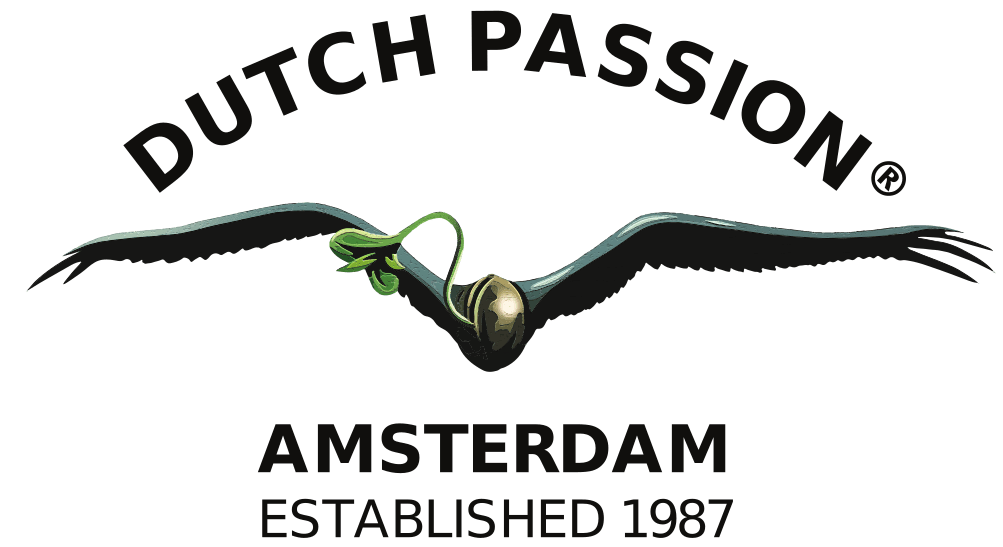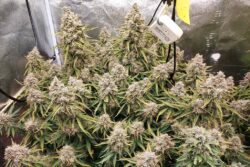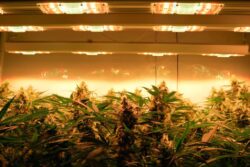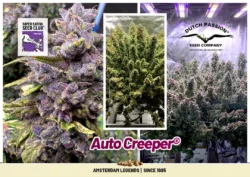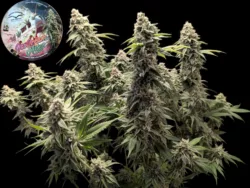Cannabis low stress training (LST) for better yields

What is low stress training on cannabis?
Cannabis low stress training (‘LST’) is a simple, but effective, grow technique that allows harvest quantities to be increased by gentle manipulation of the plant growth structure to increase light penetration (and flow of CO2/oxygen) to lower branches.
There are also high-stress training techniques used by cannabis growers such as removing the growing tip of your cannabis plant. This can produce bushier growth and superior yields but it’s a riskier technique which your plant will spend a few days recovering from.
Low stress training, on the other hand, is relatively low risk compared to techniques such as a SCROG with a topped/fimmed plant. If you haven’t tried cannabis LST before, then this low stress training step by step tutorial can guide you through the process. Low stress training is simple and effective, it may even change the way you grow cannabis in the future.

What are the effects of low stress training on your cannabis plant?
Cannabis, and many other types of fruit/veg plants, respond with superior yields when they receive more usable light for photosynthesis. It’s a trick that humans have known about for centuries. Light is the main source of energy for plant growth, so it’s logical to expect plants to grow better and bloom more heavily when you increase the lighting effectiveness.
Low stress training is thought to have been discovered by ancient farmers who found that artificially controlling fruit tree branches and ‘training’ them not only made it easier to collect the harvest, it also made it easier to grow heavy fruit on branches that would otherwise grow in the shade with poor fruit (or veg) production.
The artificial manipulation of cannabis with low stress training is designed to overcome the natural tendency of the cannabis plant to grow with apical dominance.

Cannabis low stress training vs natural apical dominance
Cannabis, along with plenty of other plants, grows naturally with apical dominance. That means, it grows straight towards the light source in a Christmas-Tree style growth pattern. Apical dominance is a botanical survival mechanism, ensuring that the plant grows directly towards the main source of photosynthetic energy. Shaded side branches, by definition, don’t get quite the same light levels as the top of the plant.
With low stress training the cannabis plant is bent over and usually tied in position to prevent it reverting to normal apical dominance. It is highly recommended to tie the plant in position with rubber coated garden wire, or similar ‘soft feel’ garden cord which won’t cut into the plant as the plant tries (unsuccessfully) to force itself back into an upright growth structure.
Once your cannabis plant has had the main stem tied into a horizontal position your side branches are now exposed to direct light from above. This allows significantly improved growth. The side blooms will grow larger as a result of the flat canopy and you can expect higher eventual yields. The best part of growing LST cannabis is that it is so easy to do if you follow a few simple rules.
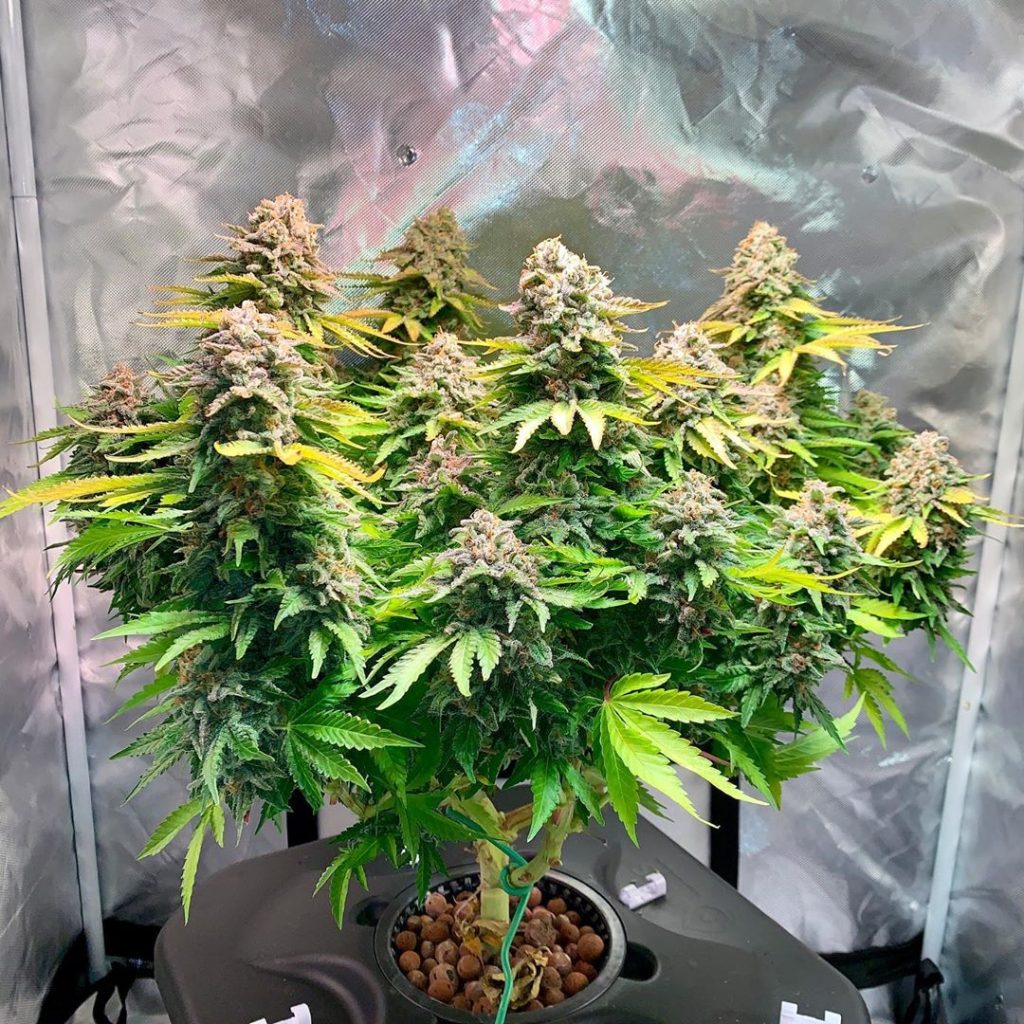
Where and when to LST cannabis?
When to start low stress training? Most growers start early on during vegetative growth. You don’t want to wait until the main stem is so stiff and strong that it is difficult to bend without breaking it. Nor do you want to be fiddling pointlessly with small seedlings that have no nodes. When the seedling is a few weeks old you can start low stress training.
If you try low stress training during flowering you may find that the main stem is too rigid and thick to bend easily. Additionally, you will have already missed the opportunity to flatten the canopy during veg and boosted the growth of your side branches. If you do accidentally snap and split the main stem of your cannabis plant, don’t worry too much. It will usually heal up within a week, many growers will apply a small strip of duct tape to cover the wound.
If you start cannabis LST during veg growth you can create a flat canopy with the side branches able to grow upwards the light. LST on the cannabis plant can be done indoors or outdoors. For outdoor cannabis growers, LST is a way of controlling vertical growth. This can have the additional benefit of making a cannabis plant easier to hide than cannabis with no training.
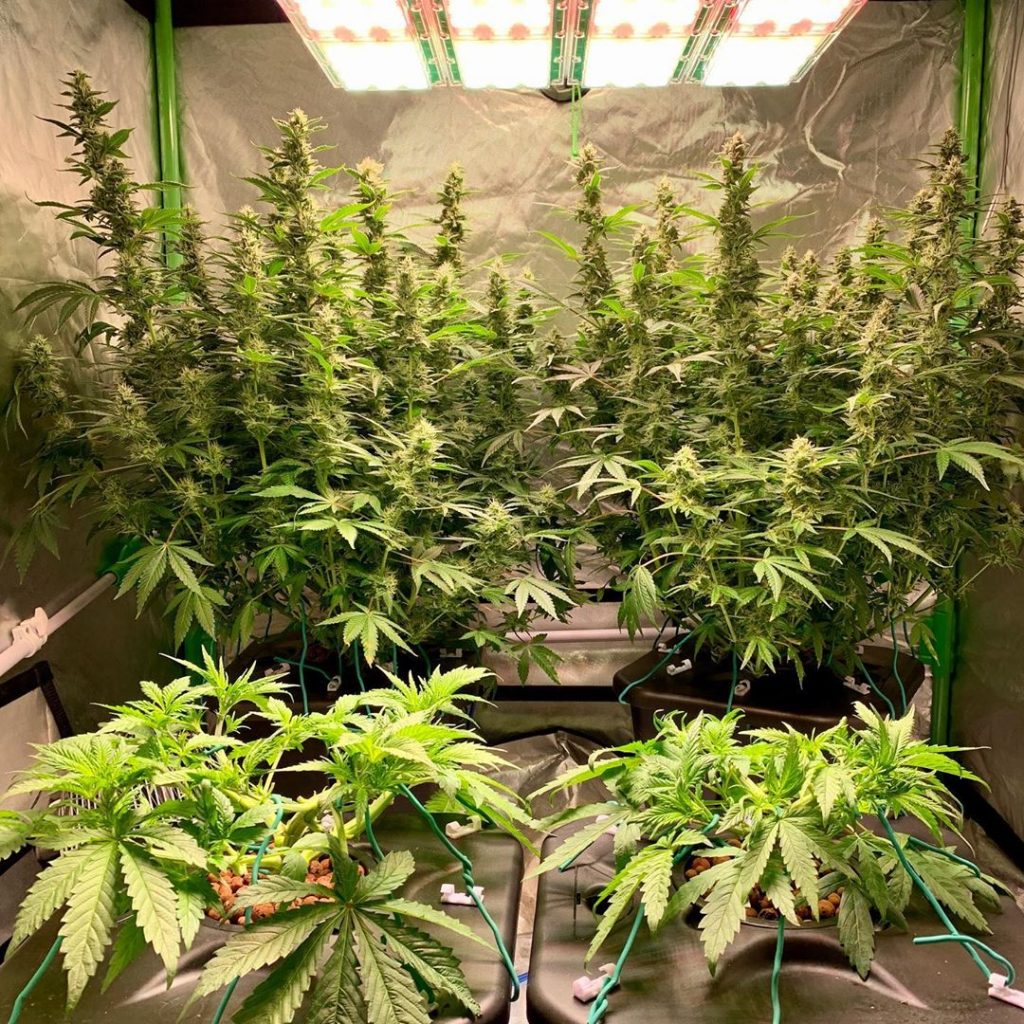
How to LST your cannabis plants step-by-step
If you have always grown your cannabis naturally, without training, you may be curious to try some new low-risk grow techniques. Low stress training is an easy technique that anyone can try. Remember, if you have wondered when to do low stress training on cannabis, aim to start when the plant has had a few weeks of veg growth. You won’t need much equipment or planning to make a success out of LST. The main benefit is the LST cannabis yield, side branches will produce larger buds.
Preparing the required equipment for LST training
Other than your cannabis plant, you won’t need much equipment for your low stress training setups. You will need just a few items:
- Some rubber coated plant wire or soft plant ties. The soft (rubber) coating ensures that the plant stem isn’t damaged or cut by the wire as it tries to force its way into vertical growth
- Bamboo support poles. There are many different ways to grow LST cannabis, there isn’t a single best LST method. But many find that the presence of a couple of vertical support poles are useful to tie plants to. Some growers fix the bamboo poles in a horizontal position, tied to the plant container. The cannabis plant is simply tied to the horizontal bamboo pole as it grows, allowing side branches to be exposed to the light. The following grow reviews show the remarkable level of bud production that can be achieved once the lower branches are opened up to light with low stress training.
- A small drill. This is useful for drilling (or poking) holes in the upper rim of your plant container. These holes are ideal for tying the rubber coated plant wire into position once you have finished bending the cannabis plant into position.
- Duct tape. Just in case you accidentally split the main stem or any other branch.

Preparing your container for LST
Many LST cannabis growers don’t fill their grow container to the very top. Instead, they leave a few centimetres free at the top of the container to allow the rim of the container to be used for tying branches and stems with cord. If it’s a plastic container, holes can be drilled at a few different point along the rim. This allows you to thread your soft plant cord (or rubber coated wire) through the holes and tie it to your plant. The same principle is used with fabric grow containers.
Breaking the cannabis plant apical dominance
Low stress training weed automatically breaks the apical dominance. The growing tip of the plant is forced to grow horizontally rather than vertically. The same principle is used when growing espaliered fruit trees against a wall. The natural shape of the plant is deliberately manipulated to allow superior production of blooms and subsequent fruit.

Shaping and maintaining your LST cannabis plants
The growing tip of the plant will want to revert to natural vertical growth as soon as it can. To prevent this, many cannabis LST growers aim to keep the horizontal grow pattern of the main stem maintained permanently. This allows the side branches to get full illumination and reach their full potential.
Whether you are growing low stress training outdoors or indoors, the same principle is used and the same yield improvements are seen. The effect of low stress training is to allow lower branches and buds to receive more light energy than they would in a normal, natural grow. If you don’t mind a little bit of extra effort, you can increase yields significantly. Precisely how much depends on the grow conditions, genetics and grower skill. But you can hope to increase your yields by 50% ++ when the low stress training has been performed well. That’s a significant bonus for anyone growing photoperiod feminised seeds, outdoor cannabis seeds or autoflower seeds.
Note that low stress training of weed is a technique used primarily to improve yields rather than potency, though potency/terpenes can increase with the additional stress factor. If you want to produce the highest THC levels in cannabis you will need an optimised grow room (probably with LED grow lights) as well as Extremely high THC cannabis seeds.
Related:
What’s a high amount of THC in cannabis?
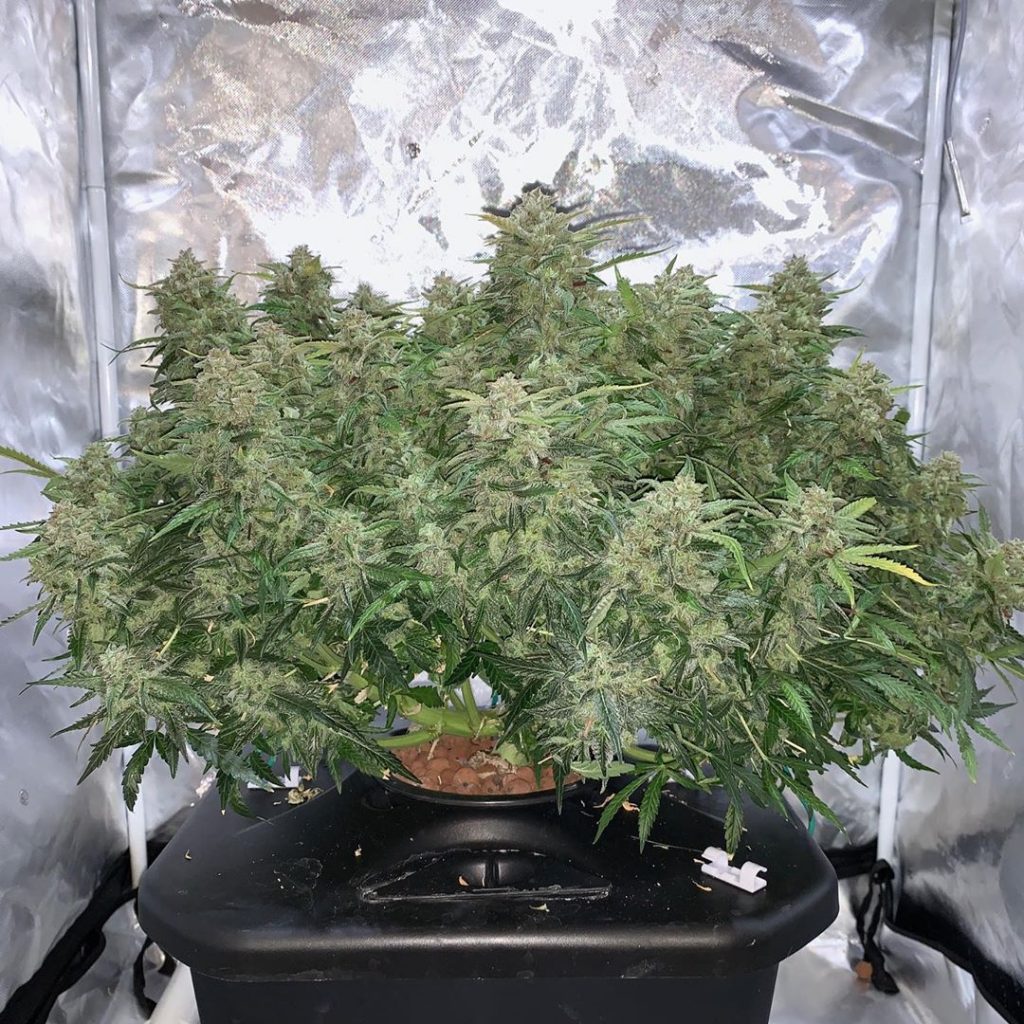
Low stress training autoflowers
Low stress training of autoflowers is very popular with home growers. Autoflower seeds have earned a reputation for being easy to grow with fast, generous harvests. If you can combine optimised grow room conditions with powerful lights and low stress training then you will be pushing your plants to produce genuine XL yields.
One of the big surprises to new cannabis LST growers is the amount of buds that can be produced even from the lowest branches which might otherwise only produce tiny ‘popcorn’ buds.
Related:
Optimising your cannabis grow room conditions
Low stress training small cannabis plants uses the same principles and techniques as low stress training large plants. Once you have gained some experience with cannabis LST cultivation you will feel equally comfortable with it on indoor or outdoor plants as well as autoflower seeds vs feminised seeds. If you want to combine low stress training with particularly potent autoflower genetics we recommend Auto Cinderella Jack, which is (currently) the highest THC autoflower seed in the Dutch Passion collection.
Related:
With over 25% THC is Auto Cinderella Jack the world’s strongest autoflower?
Low stress training vs topping cannabis
Low stress cannabis training is an easy technique to master without any of the highly stressful effects associated with cutting off the growing tip of the cannabis plant (‘topping’). If you are new to cannabis growing, or if you are risk averse, then low stress training is definitely recommended vs topping. One other growth technique that can be used to increase cannabis harvest quantities is the Screen Of Green (‘Scrog’) grow method. Scrog will take a little bit more effort compared to low stress training, but it is a technique that all serious growers should be familiar with.
Related:
How to grow cannabis with the SCROG method
Top 3 cannabis strains suitable for LST training
When cannabis plants are young and flexible, low stress training can be applied irrespective of the strain or genetics. The cannabis LST technique only really becomes difficult and risky if it is implemented during bloom when the branches and stems can be more rigid and prone to snapping.
Having said that, many LST pro-growers lean towards sativa or sativa-dominant cannabis strains which are often a little easier, stretchier and more flexible to manipulate. We hope this low stress training tutorial has shown you how easy it is to increase your yields with a small amount of effort!
Power Plant
Power Plant is a cannabis cup winning best seller with huge numbers of repeat growers. This South African sativa dominant strain has a reputation for very heavy yields. These only increase when low stress training is used! Power Plant was first released in the 1990’s and has remained a customer favourite ever since. She packs a hugely powerful smoke/vape with a delicious taste and soul-soothing anti-anxiety effects. With just 8-9 weeks of bloom time Power Plant genetics deliver speed, potency and great yields. Highly recommended for low stress training.
Auto Power Plant seeds use the same great genetics. It’s an autoflower seed with genetics from the Dutch Passion Classics collection. Auto Power Plant is easy to grow and manipulate with low stress training. Lower branches become particularly productive. Like all Dutch Passion autoflower seeds, these grow optimally under 20 hours of indoor light and take around 75 days to grow from seed to harvest.
Related:
Power Plant grow review
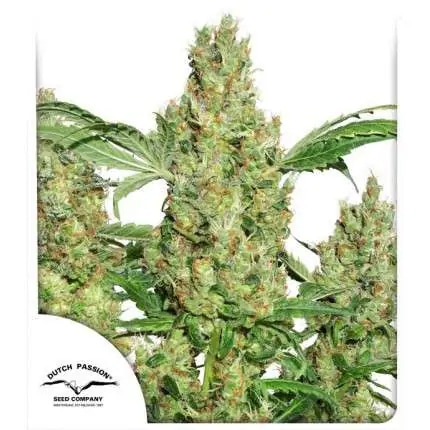
Type: Feminised seeds
Genetics: Original South African Power Plant
Family: Classics
Plant type: Sativa
THC: High
Flowering: 8 weeks
Yield: XXL
Strawberry Cough
Dutch Passion original Strawberry Cough has been an iconic sativa strain ever since she was released. With high THC levels and a sweet strawberry taste it’s a unique cannabis strain with a cult following of repeat growers who love the smooth, stress busting relaxing effect. It’s part of the acclaimed USA Special cannabis seed collection with a social and energetic high.
The sativa genetics ensure that this flexible lady is easy to grow and manipulate in an LST cannabis grow. The 9 week bloom time means you won’t have to wait too long until you are enjoying a delicious tasting harvest.
Related:
Strawberry Cough grow review
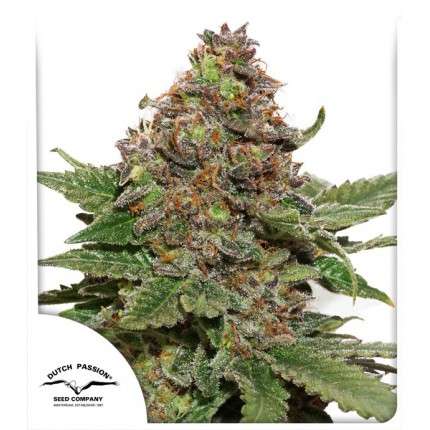
Type: Feminised seeds
Genetics: Original Strawberry Cough
Family: USA Specials
Plant type: Sativa
THC: High
Flowering: 9 weeks
Yield: M/L
Desfrán
A proud member of our elite collection of Dutch Passion Very High THC cannabis seeds, Desfrán is a legendary variety in South America and a multiple prize winner of many cannabis cups. During veg growth she needs relatively little nutrition. She is also easy to work with in a LST cannabis grow. During bloom she can more than triple her height. Expect heavy yields, but note that only indoor growers with sufficient space should consider growing this very stretchy strain.
Auto Desfrán is the autoflower seed version. She shares the same great, very high THC genetics and the same suitability for low stress training. These are unusual autoflower seeds in that they can take a 12-15 week grow cycle. That’s longer than many other autoflower strains, but the yields and sensational smoke quality really are well worth the wait. A real staff favourite!
Related:
Desfrán grow review

Type: Feminised seeds
Genetics: Destroyer X Destroyer
Family: Latin America
Plant type: Sativa
THC: Very High
Flowering: 9 weeks
Yield: XXL
Low stress training cannabis for heavier yields
Of all the different cannabis grow styles and techniques, low stress training is one of the least difficult for the plant to adapt to. LST is a great way for growers of all types to improve the yields from their plants. What’s more, growing LST cannabis really is easy. Some growers try low stress training once and decide to grow with it forever. It could also change the way you grow cannabis, if you haven’t tried LST yet you will be surprised at how easy it is.
If you really want to make an impact with your first LST grow you may want to try combining LST with the heaviest yielding Dutch Passion cannabis seeds. That way, you could really break a few personal records!
Related:
Top 5 yielding outdoor feminised seeds
Top 5 yielding indoor feminised seeds
Top 5 heavy yielding autoflower seeds

